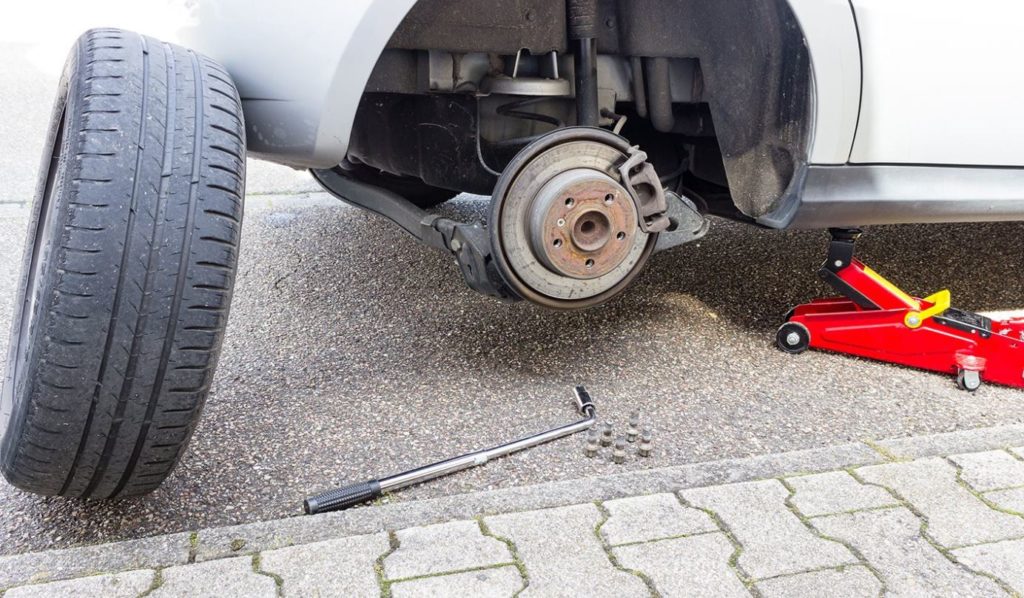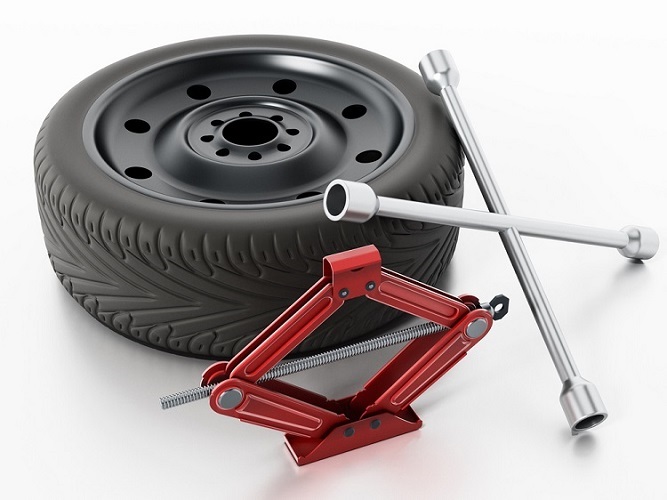10 Easy steps On How To Change Your Car Tyre
Having a flat tyre can be quite frightening, especially when you are out in the middle of nowhere, out of sight.
Well, changing a tyre isn’t really a big deal as long as you have the right tools and know what to do with a little bit of elbow grease you might just complete it in under 15min and get back on the road.
It’s better to be prepared than caught completely off-guard. Knowing how to change your tyre is one of the most important skills any motorist should have.
Before deciding to pull over on the side of the road, make sure you are in a safe area and in a calm state.
In this article, we are going to provide you with a walkthrough on everything you need to know to change your tyre correctly.
Before deciding to pull over on the side of the road, make sure you are in a safe area and in a calm state.
Let's Get Started
You have decided to take the matter into your own hands. No one is coming to help you and you are not going to sit there waiting for a generous motorist to help you change your tyre. There are a couple of things you need to make sure of before you start grabbing those tools.
After safely pulling over onto the side of the road away from on going traffic. Make sure that the road surface is flat (never change tyres on a slope or incline). This will prevent the car from sliding or tipping over while it’s being worked on.

- Pull the handbrake up and make sure that the car is either in gear (if manual) or in park (if automatic).
- Remove all passengers with exception of toddler/babies, but make sure that they are safely seated in their car-seat or locked inside the car with the child lock activated. (You do not want to have kids walking around while you are busy working on the car on the side of the road).
- Switch off the ignition and put the hazard lights on.
- Pull out and assemble your Emergency Warning Triangle, be sure to place about 45m away from your stationary vehicle to alert the on going traffic that you are parked on the side of the road.
Inventory Check
First and foremost, you need to make sure you have everything you need to complete this task.
Here are the 3 essentials things you need:
A Jack, a good Spare tyre/wheel and a Wheel Wrench. Make sure that the spare tyre is in good condition (properly inflated without any signs of bad wear or tear and that the valve is properly closed).

Remove The Hubcap or Wheel Cover if needed
Carefully remove your hubcap/wheel cover and palace it aside, somewhere where you won’t lose it.
Loosen the wheel nuts with the nuts wrench but do not remove completely
Tips to make this process easier. To avoid struggling when changing your tyre. Make sure to loosen your wheel nuts before the wheel is lifted in the air. If the lug nuts are hard or too tight to turn, you can use your foot as leverage by carefully applying pressure by stepping on the horizontal end of the wheel wrench in order to break it loose.
You want to make sure that the wheel nuts are loosen enough with the wheel wrench to make sure that when the wheel is lifted you can continue to completely remove them with your bare hands.
Raise the car up
Proceed by placing the jack underneath your car (please consult your car’s owner’s manual to locate the appropriate jacking point). Make sure that the jack is seated flat on the ground and straight towards the jacking point of the car close to the wheel that needs to be replaced. Slowly and carefully raise the car until the wheel is about 15-20 cm off the ground.
Remove the wheel nuts
After having loosen your lug nuts on the ground with the wheel nut wrench. Loosen them further by turning them counterclockwise using your hands. Carefully put the wheel nuts in a safe place to make sure to not lose them.
Remove the punctured wheel
After having lifted the wheel off the ground and removed all the lug nuts. Here comes the part you might find a bit difficult, this will most likely depend on the size of your wheel and how heavy it is. Don’t worry, we got a tip to make this process easy too.
Place both hands on each side of the tyre and pull it forward. If you struggle to pull it completely, put your foot under the tyre, then pull the tyre while lifting it with your foot. Roll it out of your way.
Replace the tyre
Change the tyre using either a full-size or space saver wheel located in or underneath your car boot. Using both hands carefully lift the spare tyre and place it onto the wheel hub, while making sure that the wheel rotation direction is facing the correct way (Tyre rotation direction is marked onto the tyre).
Tighten your wheel nuts
After placing the wheel onto the wheel hub, start by tightening the nuts using your hands. When mounting a wheel onto a car, you should always tighten the nuts by hand. Then use the wheel wrench to securely tighten them one after another in a crisscross pattern. Diagonally opposite sequence, example: tighten one first, then tighten the one diagonally opposite it – not directly next to it).
Lower the vehicle and tighten the wheel nuts with your wrench
t’s time to lower the car back down to the ground. You are almost done. Now, with the help of your wheel nut wrench carefully tighten each wheel nut in a crisscross pattern until they are tight and fully secured. For more assurance, just like we mentioned at the beginning, use your foot as leverage by applying pressure on the horizontal end of the wheel nuts wrench to ensure that the wheel is fully secured.
Please make sure that you do not over tighten your wheel nuts, as they might break.
Voila! You have done it. You just finished replacing a flat tyre on your own. You can pat yourself on the back and boast about it later to your friends or family.
Before you go, make sure to visit a tyre shop to have that punctured tyre fixed or replaced if it’s beyond repair.
It is always good to drive with a spare wheel in case of an emergency. Also, not all cars come with a full size spare wheel, Some spare wheels are space saver (meaning they are small and not recommended as a long term choice of replacement). Space saver wheels are often small and limited in terms of speed and mileage capabilities compared to full size tyres.
We hope that this article was informative and gave you enough insights on how to safely and correctly change your tyre if you ever needed to. Feel free to ask for help/assistance if you do not feel comfortable, confident or even if you do not have all the appropriate tools.
Make sure to visit our site autosupply.co.za for all things car-related. Whether you are looking for new replacement car parts, tools or even if it’s just to read our blog and learn new tricks. We at autosupply have got you covered.